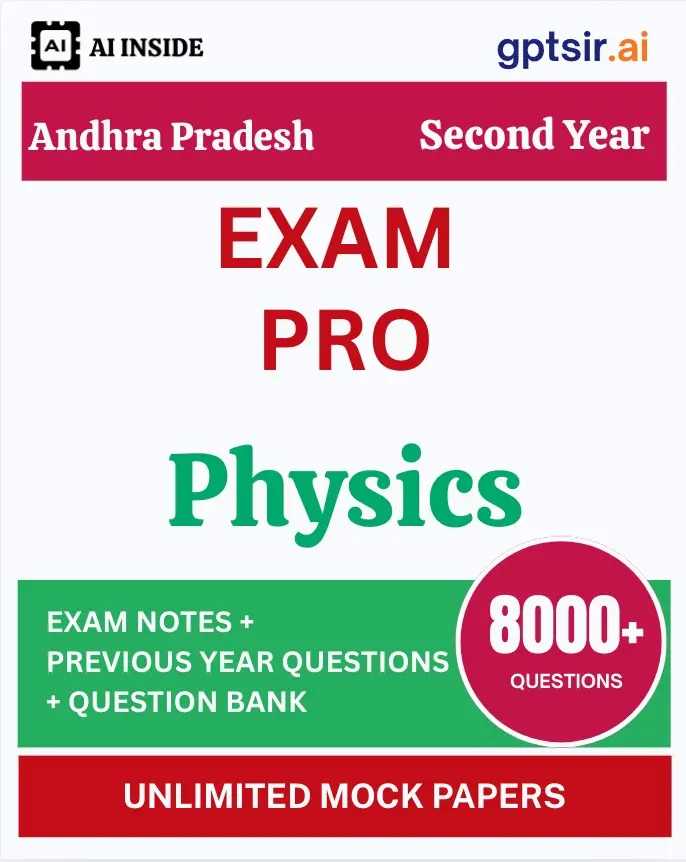
Free Reading Material
Preview chapter content from Andhra Pradesh State Board - 2nd Year - Class 12 - Physics - English Medium - Exam PRO
Transverse and Longitudinal Waves
- Transverse waves: Particle oscillations are perpendicular to wave propagation direction. Example: waves on a string, seismic S-waves.
- Longitudinal waves: Particle oscillations are parallel to wave propagation direction. Example: sound waves, seismic P-waves.
- Mechanical waves require a medium (solid, liquid, or gas) to propagate because particles transfer energy by oscillation.
- Wave speed formulas:
- Transverse waves in solids: \( v = \sqrt{\frac{G}{\rho}} \), where \(G\) = shear modulus, \(\rho\) = density.
- Longitudinal waves: \( v = \sqrt{\frac{B}{\rho}} \), where \(B\) = bulk modulus, \(\rho\) = density.
- Shear modulus
- Bulk modulus
- Transverse waveslongitudinal waves
- Examples:
- Transverse: waves on a stretched string, electromagnetic waves (not mechanical), seismic S-waves.
- Longitudinal: sound waves in air, ultrasound in solids, seismic P-waves.
Worked example: Calculate speed of longitudinal wave in a medium with \(B = 1.5 \times 10^9 \, N/m^2\), \(\rho = 2500 \, kg/m^3\).
\( v = \sqrt{\frac{B}{\rho}} = \sqrt{\frac{1.5 \times 10^9}{2500}} = \sqrt{6 \times 10^5} = 774.6 \, m/s \)
Want to read more? Unlock the full chapter with AI-powered learning!
Access Full ChapterTry the AI Tutor Demo
Click a question below to see how GPTSir answers like a real tutor: For the chapter - WAVES
What are the most important questions from this chapter for exams?
Explain this chapter in simple words so I can understand quickly.
What common mistakes should I avoid in this chapter during exams?




